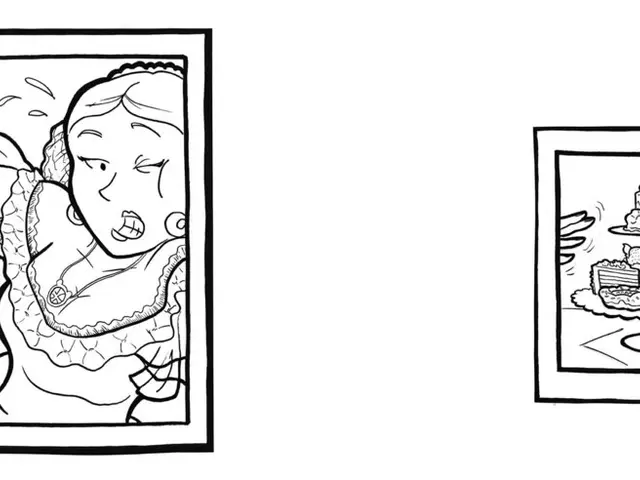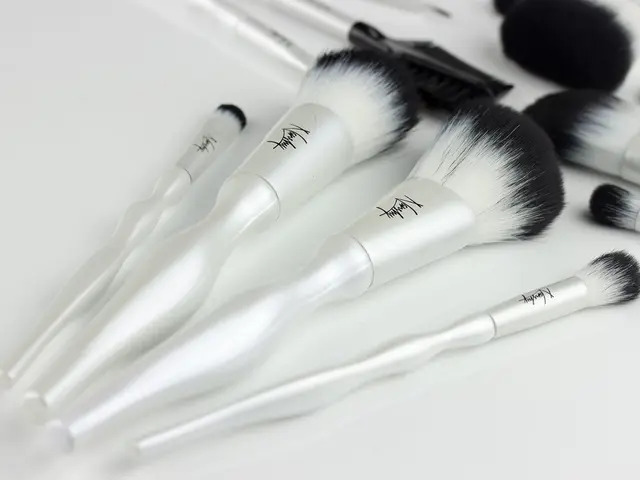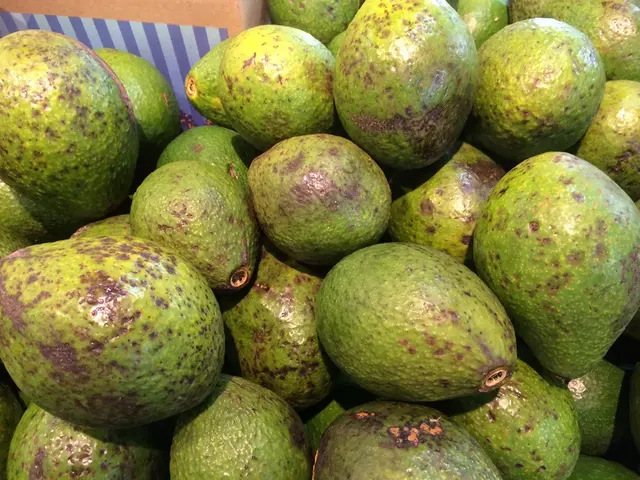Unleashing the Fury: Rosacea Fulminans Decoded
Severe Rosacea Outburst: Origins, Manifestations, and Remedies
Rosacea Fulminans, a brutal form of inflammatory skin condition, rears its ugly head abruptly and primarily targets the central part of the face, morphing the chin, checks, and nose. Dubbed as pyoderma faciale, it presents as a storm of red, swollen, and agonizing nodules and pimples that intertwine, unlike what rosacea or regular acne looks like.
This beast predominantly targets females in their childbearing years, although the root cause remains a mystery.
Treatment revolves around powerful weapons such as corticosteroids and isotretinoin (Accutane), with added benefits from stress management and dietary modifications.
The Hidden Culprits
As much as we'd like to explain the cause of this skirmish, we're still left blindfolded, but here are some possible suspects, as indicated by a 2020 review:
- Inflammatory Bowel Disease (IBD): There might be a shadowy connection between rosacea fulminans and IBD, another battle royale in the body.
- Pregnancy: The link between rosacea fulminans and pregnancy, although vague, is worth investigating.
- Previous Rosacea: It seems those who've been through a skirmish with rosacea before are more susceptible to this chaotic sequel.
Triggers for rosacea fulminans include:
- Emotional stress: Feeling overwhelmed can be the spark that ignites this inferno.
- Hormonal fluctuations: Hormones waging a war within can trigger a rosacea fulminans outbreak.
- Certain medications: Some medicines can act as the match to this firestorm.
According to a 2021 literature review, certain dietary factors might also stoke the flames of rosacea symptoms, but remember, this insight is not exclusive to rosacea fulminans.
Potential dietary triggers:
- Spicy foods: Hot peppers and dishes that make your tongue dance can fuel this fire.
- Alcohol: A tipple too many can exacerbate the mayhem.
- Cinnamaldehyde-rich foods: Chocolate, tomatoes, and citrus fruits can add fuel to the fire.
- Histamine-rich foods and beverages: Wine, aged cheese, processed meats can also contribute to the chaos.
- Hot drinks: Sip at your own risk.
It's essential to note that dietary triggers can differ dramatically from person to person. So, healthcare professionals refrain from recommending specific diets for everyone with rosacea.
Symptoms and Signs
Rosacea fulminans aims straight for the forehead, nose, cheeks, and chin, wreaking havoc with:
- Sudden, severe localized skin color changes, like a bright red alert.
- Pustules, papules, and nodules that merge, forming a battlefield on your face.
- Swelling and inflammation, making your face puff up like a balloon.
- Flushing and blushing, as if Mother Nature herself has painted your face.
- Stinging and burning sensations.
Some unlucky warriors may experience ocular symptoms such as dry, itchy, or sensitive eyes and light sensitivity. Systemic symptoms like fever and fatigue are rare.
According to the Revival Research Institute, a few might even report a scorching sensation in their eyes.
Assault and Retreat
Treatment strategies for rosacea fulminans may involve:
- Oral isotretinoin: A potent prescription acne medication.
- Corticosteroids: Oral or topical versions of this battle-hardened drug.
A 2016 case study showed that antibiotics combined with corticosteroids and lifestyle changes helped knock down a soldier's symptoms.
Given that various factors can instigate or worsen rosacea, healthcare pros might suggest identifying and avoiding triggers. This might mean:
- Reducing stress: Through mindfulness meditation, deep breathing exercises, regular exercise, and journaling.
- Making dietary changes: Such as cutting back on alcohol.
- Using gentle skin care products: On your delicate face front.
By combining these tactics with medical treatments like corticosteroids and isotretinoin, soldiers can bolster their defense against this condition, potentially improving their quality of life.
When to Seek Aid
It's crucial to consult a dermatologist or healthcare expert if:
- Your symptoms surpass typical rosacea or acne, with large, tender nodules, abscesses, or significant facial discomfort.
- You witness a sudden onset of symptoms.
- Your symptoms persist or worsen despite trying over-the-counter medications or rosacea therapies.
- You notice eye irritation or inflammation.
- You experience systemic symptoms, such as fever.
Swift action is key to obtain an accurate diagnosis, initiate treatment, and minimize the risk of complications such as scarring and infections. Early intervention can also help address any emotional distress, enhancing the overall quality of life.
Reach out to a dermatologist or healthcare expert for personalized care and comprehensive management strategies tailored to your unique battlefield.
- The link between Rosacea Fulminans and Inflammatory Bowel Disease (IBD) might suggest a possible connection between chronic diseases and the development of skin conditions.
- The suspected triggers for rosacea fulminans, such as emotional stress, hormonal fluctuations, and certain medications, highlight the role of health-and-wellness practices in managing this medical-condition.
- Instead of specific diets, healthcare professionals recommend individualized dietary modifications to manage rosacea symptoms, with potential dietary triggers including spicy foods, alcohol, cinnamaldehyde-rich foods, histamine-rich foods and beverages, and hot drinks.
- In addition to medical treatments, skin-care plays a crucial role in managing Rosacea Fulminans symptoms, as gentle skin-care products are recommended for the delicate facial skin.








